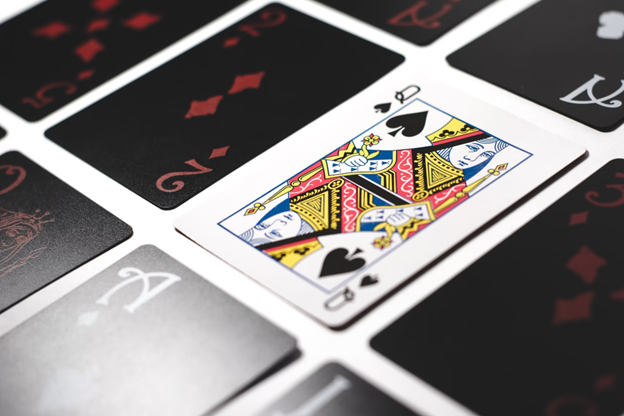Of all the casino games available in the United States, blackjack is one of the most competitive and thrilling. Players can compete against the dealer in this timeless card game while taking in the lively atmosphere of a busy casino floor. With a tantalizing collection of casino options in the US, there is no shortage of both land-based and online platforms that offer everything from traditional blackjack games to innovative variations.
Whether you prefer the classic thrill of sitting at a real table or the convenience of playing from the comfort of your home, the choices are abundant for players looking to test their skills and luck. The objective is straightforward but also fascinating: reach the desired 21-point score, sometimes known as a “blackjack.” What makes this game so captivating is the suspense and exhilaration of figuring out probability, making predictions about the potential course of action, and crossing your fingers for the perfect hand.
Understanding the Cards: The Foundation of Blackjack Odds
At its core, blackjack is all about one simple goal: getting as close to 21 as you can without going over. Cards numbered from 2 through 10 are worth their face value, while face cards like jacks, queens, and kings are all worth 10. An ace can be tricky as it can count as either 1 or 11, depending on what’s best for your hand.
The likelihood of getting a winning hand with a regular 52-card deck depends on understanding the card composition. To achieve a “natural” blackjack, which consists of an ace and a ten-value card, you must draw these two cards first. You have a 4 out of 52 chance of getting an ace initially because there are four aces in the deck. Then, of the 51 cards that are left, 16 are ten-value cards.
Variations in Casino Options Affecting Odds
Blackjack rules and odds might vary throughout U.S. casinos, although the fundamental probability is fairly standard. Numerous casinos use several decks, occasionally up to eight in a single game. The odds of drawing an ace-ten combination change somewhat when more decks are used, giving the starting likelihood of winning a blackjack around 1.5%.
Additionally, casinos frequently provide variations such as “European Blackjack,” which may have somewhat different rules, such as dealing one card before the dealer reveals theirs. Your strategy may be impacted by these changes, particularly if you count cards.
The Art of Basic Strategy
Now that we’ve covered the probabilities, let’s talk strategies. A solid starting point is learning basic strategy, which uses mathematical probabilities to guide your actions based on your hand and the dealer’s visible card.
Know When to Hit or Stand
Choosing when to hit, which allows the player to draw another card, or stand, which allows you to keep your present hand, is one of the basics of basic strategy. In general, you should stand if your hand is worth 17 or more because going above that amount can cost you the game. Hitting is the best course of action if it is eleven or less. Your decision to hit or stand will be based on the dealer’s show of hands valued between 12 and 16.
Doubling Down and Splitting Pairs
Doubling down can be a smart move when you’ve got a strong hand. This allows you to double your bet for just one extra card. Statistically, it’s ideal to double down when you have an 11 or a total of 10 against a dealer’s weaker card.
If you’re dealt a pair, splitting them into two separate hands can boost your chances. Splitting aces and eights is typically a good idea, but avoid splitting tens since your total value is already strong.
Avoid Insurance Bets
One common mistake is falling for the lure of insurance bets. When the dealer shows an ace, players might get offered insurance against a potential blackjack. While it might sound appealing, the odds aren’t in your favor. Unless you’re counting cards and have a solid grip on what’s left in the deck, it’s generally better to skip the insurance altogether.
Card Counting: A More Advanced Strategy
For those eager to enhance their blackjack experience, card counting can be a powerful strategy. This technique involves tracking the ratio of high cards to low cards left in the deck. Knowing which cards remain gives players an advantage—they can increase their bets when high cards are more likely to come up and decrease them when low cards dominate.
Although casinos have a variety of methods to thwart effective card counting, such as shuffling frequently and using multiple decks, it remains a legitimate strategy for dedicated players willing to invest the time to master it.
Conclusion: Mastering the Odds and Strategy
In blackjack, hitting 21 is an exhilarating moment that combines skill, luck, and a firm understanding of probability. Since there is a 2.41% chance of receiving a natural blackjack, players must use smart tactics when they are at the table. Players can increase their chances and enjoy this classic casino game more by learning the fundamentals and taking into account more complex strategies like card counting.
As you explore the lively casino options in the U.S., keep in mind that every hand of blackjack is a careful balance of strategy and chance. Whether you’re a casual player or a seasoned veteran, the quest for that perfect blackjack hand will always draw you back for more. So gather your chips, review your game plan, and may lady luck be on your side as you aim for that coveted 21.




